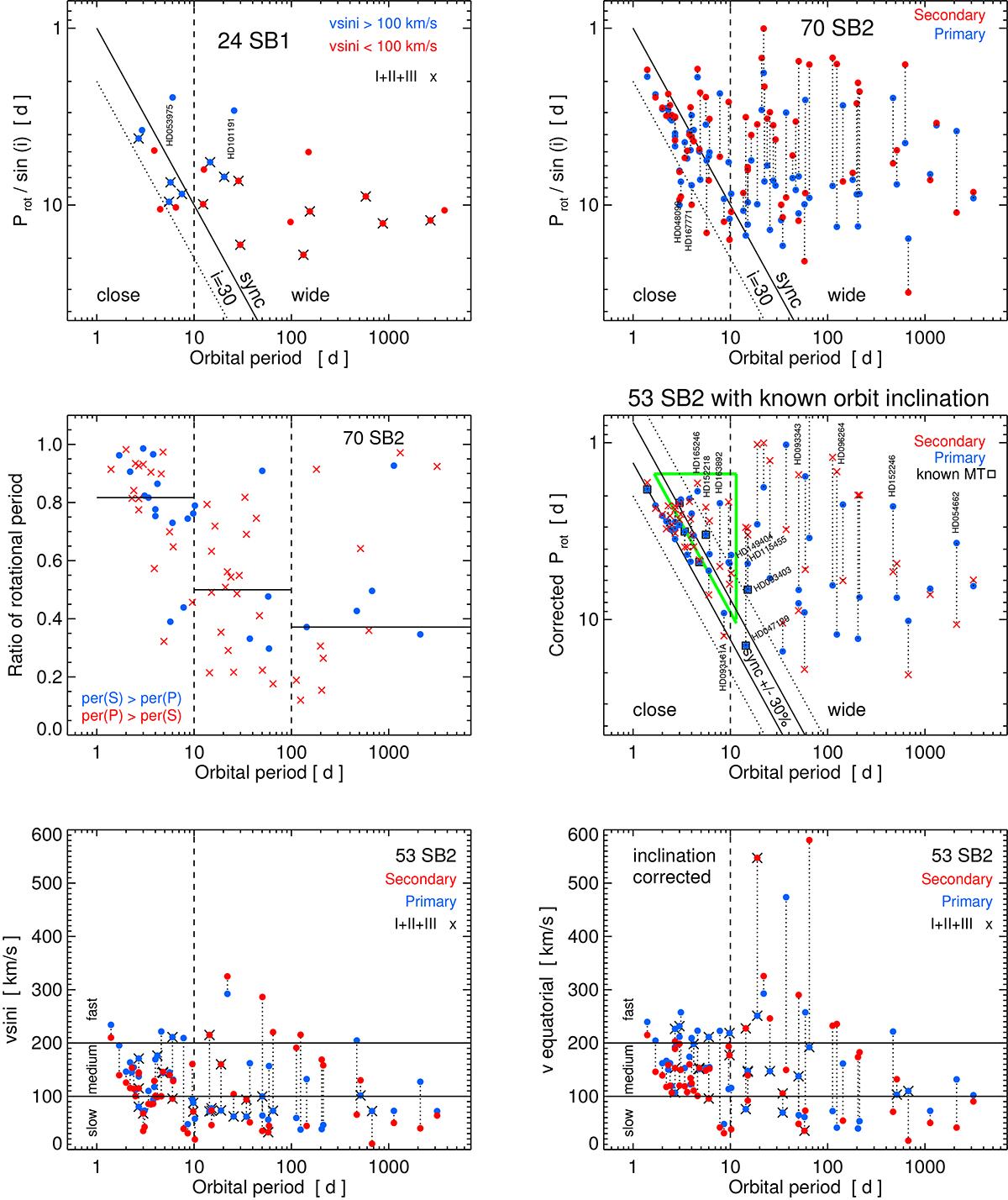Fig. 16.

Download original image
Dependence of rotational properties on the orbital period. Top: Rotational period vs. orbital period for SB1s (left) and SB2s (right). The y-axis of Fig. 16 is inverted in order to preserve that faster (slower) rotating stars are plotted up (down). The vertical long-dashed line separates close and wide binaries. The solid diagonal line labelled ‘sync’ marks equal periods, as required for synchonised rotation, whereby an inclination i = 30° of the rotational axis shifts the data points from this line by a factor of 1/sin(30°) = 2 to the dotted inclination line labelled ‘i = 30’. The two SB2s below the dotted inclination line indeed have known iorb < 20° (HD 048099 and HD 167771). For SB2s, the components are connected with a vertical dotted line; for most wide binaries at Porb > 10 d, Prot differs strongly between the components but the difference reduces and disappears for close binaries. Middle left: Ratio of Prot of the binary components vs. Porb; the horizontal lines mark the median in each Porb range. Middle right: Prot vs. Porb for those 53 SB2s with known inclination of the orbital axis iorb; Prot is corrected for inclination assuming parallel orbital and rotational axes. The solid and dotted diagonal lines mark the synchronisation range with a width of 30% and a factor of 2, respectively. The green triangle marks the range above the sync line discussed in the text. Bottom left: v sin i vs. Porb for the 53 SB2s with known iorb. Bottom right: veq vs. Porb after correction for the inclination.
Current usage metrics show cumulative count of Article Views (full-text article views including HTML views, PDF and ePub downloads, according to the available data) and Abstracts Views on Vision4Press platform.
Data correspond to usage on the plateform after 2015. The current usage metrics is available 48-96 hours after online publication and is updated daily on week days.
Initial download of the metrics may take a while.


